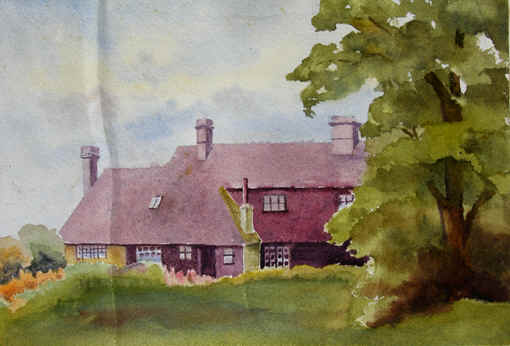|
Olivers Farm
The farm may derive its name from one Edmund Olyver a
citizen and stockfishmonger in London, who in 1370 was involved
in a law suit over a piece of land in Asshe. Whether this is so
or not, the place has clearly been inhabited for many years.
Such things as odd pieces of horse furniture, pack horse bells,
hand wrought nails and other strange pieces of iron ware and
fragments of pottery, especially of Wrotham pottery have been
found. About Wrotham pottery, with its very distinctive brown
and yellow stripes, little seems to be known. There are a few
pieces in the Fitzwilliam Museum at Cambridge. Very few complete
pieces exist, though a large dish, broken it is true, but
capable of being mended, came to light recently. Bits of old
clay pipes are constantly being dug up and one ingenious
suggestion is that the place was once a fairground, but the much
more likely view is that Cromwell’s Roundheads were once
billeted at the Farm. It is apparently a fact that quantities of
clay pipes are often |
|
found where the Roundheads were quartered for any length of
time. In 1860 the farm was owned by J. Duff, but on one of the
windows are the initials O.H. and J.H. and the date October 28th
1885. These initials are those of Oliver and Jesse Hollands, two
brothers, and uncles of John Hollands of Rumsey Farm, both
emigrated to Australia. The present owner of Olivers Farm is Sir
Geofffrey S. King K.C.B., K.B.E., M.C. who has lived there since
1925. Additions and alterations have been made to the house
since that time, but all in keeping with the original building.
Olivers Farm is a typical Kentish timber framed house with long
sloping tiled roof and when a few years ago one of the walls
needed repair some of the original daub and wattle was found.
The timbers came originally from a ship and one of them bears
the date 1650. One cannot but wonder to what strange places they
had sailed before coming to rest 500 feet upon the Kentish Hills
|
